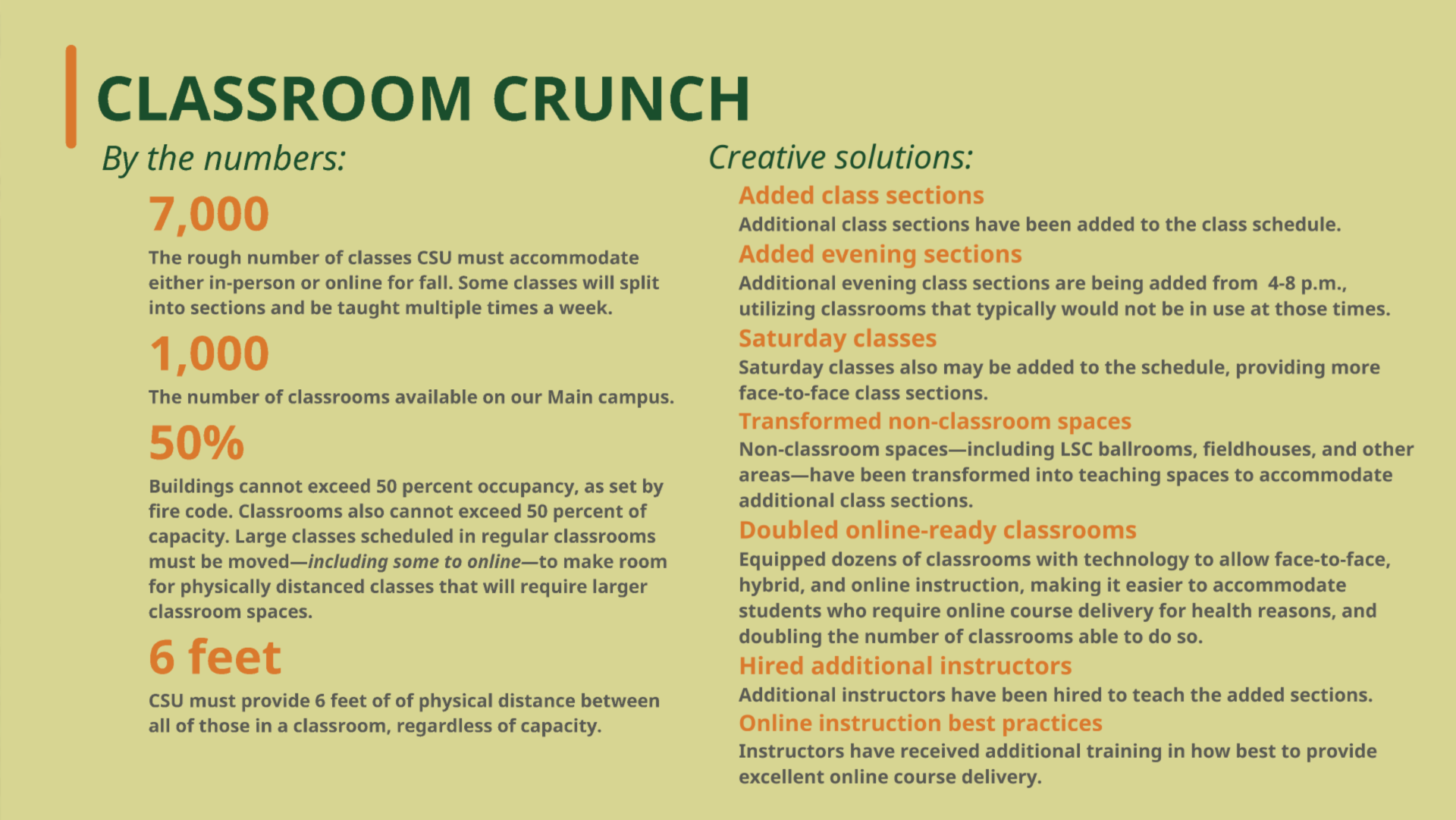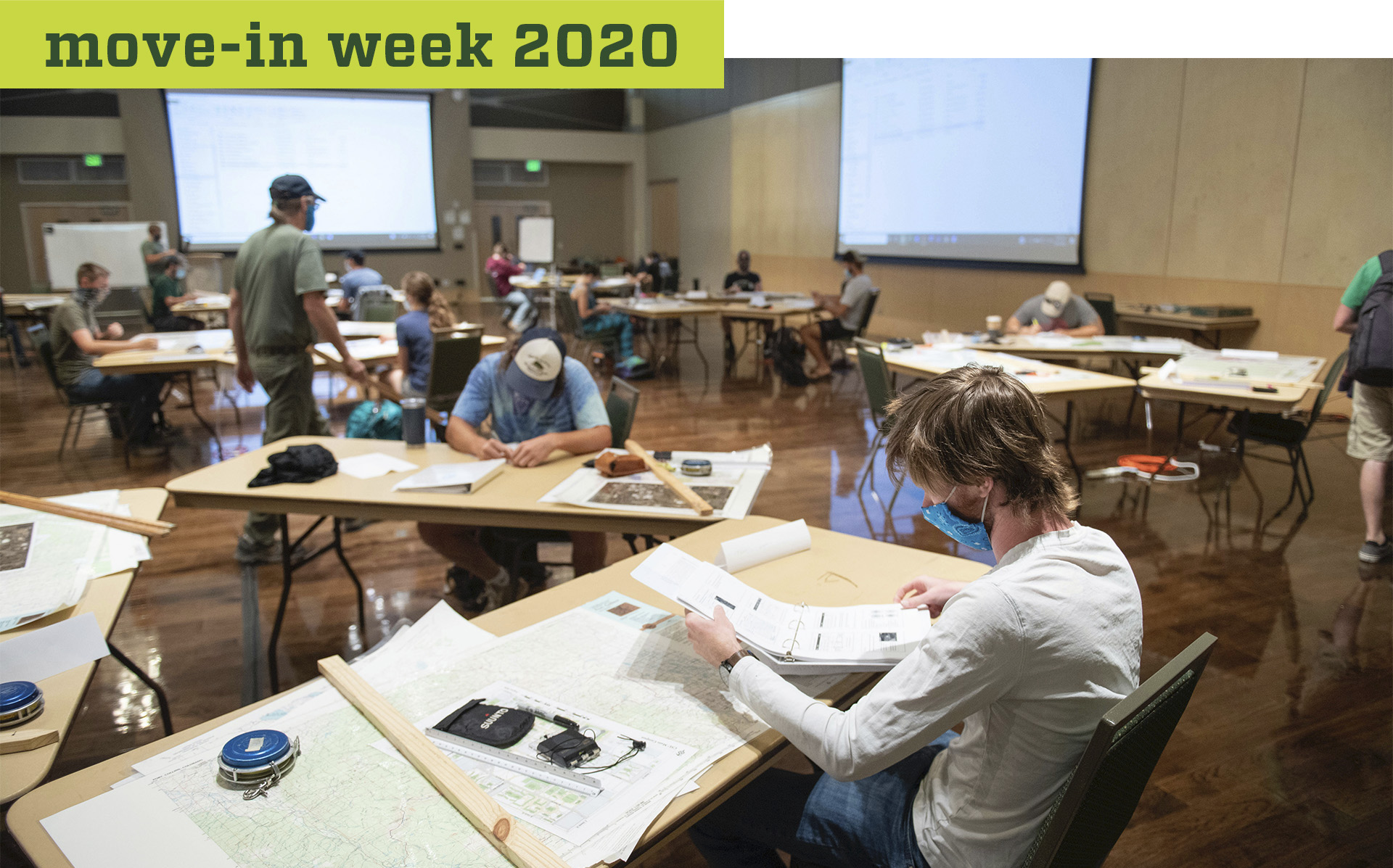
Students attend Rocky Coleman’s “Forestry Field Measurements” course in one of the Lory Student Center’s ballrooms on Aug. 12. Photos by John Eisele
As Colorado State University prepares to implement new COVID-19 health protocols in fall classes starting Aug. 24, more faculty members have gotten a taste of what the new normal will be like as they tested the guidelines in their summer courses.
They join Mike Mansfield, a history instructor who was the first at CSU to pilot the new protocols and hybrid model with both in-person and remote students in July.
Rocky Coleman, a master instructor in the Department of Forest and Rangeland Stewardship who began teaching a two-week “Forestry Field Measurements” course on Aug. 10, doesn’t have any remote students, but faced other challenges.
Video by Ron Bend
Class in a ballroom
Normally, his 25 students would have taken the entire course at the CSU Mountain Campus, but the close quarters of the facilities there made that inadvisable during the pandemic. So Coleman and his team of instructors are holding class in one of the ballrooms in the Lory Student Center. There students are seated at least six feet apart in groups of three, at tables arranged in pods. Coleman said students have been good about using the provided sanitizer and wipes to clean their hands and desk surfaces before each class session.
And the only time he’s had to remind a few students to keep their masks on is when the class goes outside for fieldwork on campus. Initially, Coleman even had to remind himself to stay six feet away when a student asked for individual help. He’s gotten in the habit of having them slide their papers down the table toward him instead of leaning over next them, as he’s been accustomed to doing for decades.
“It’s been an adjustment to keep my distance,” Coleman said. “But overall I think we’re doing well. Having your notes and lectures available on Canvas is good. We’re getting the material across the same.”
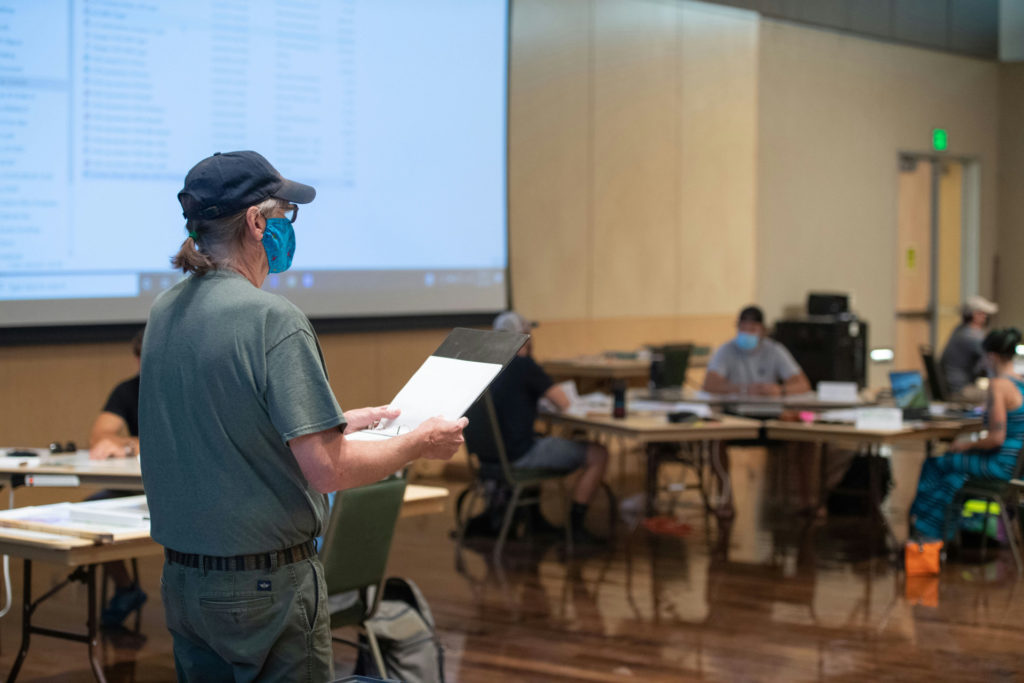

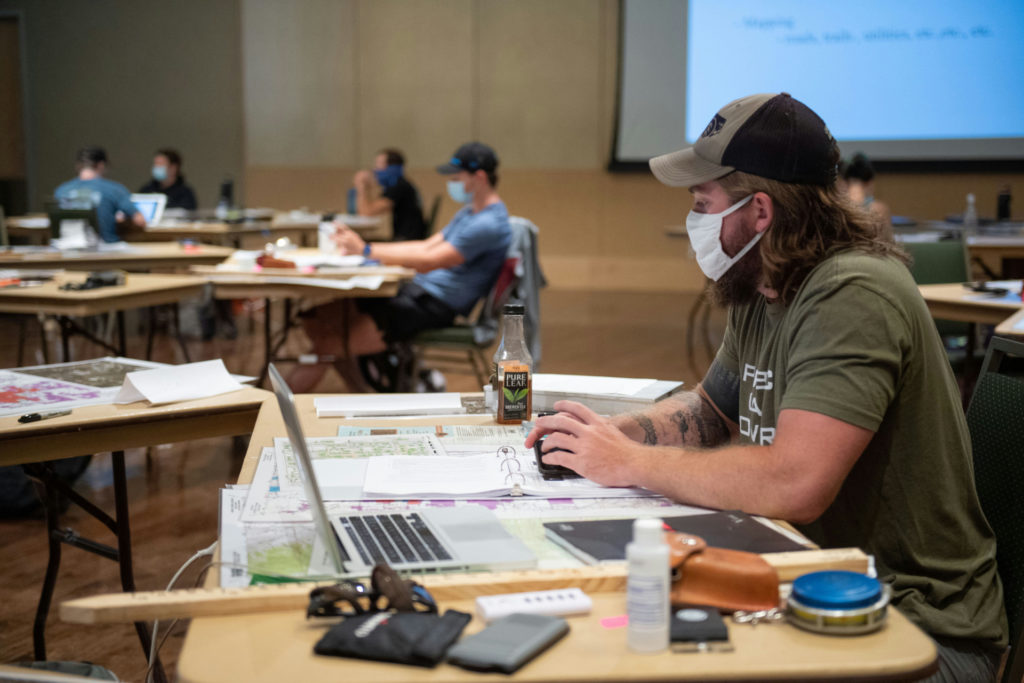
Focus on teaching and learning
Sharon Anderson, a professor in the School of Education, taught a three-week graduate course called “Introduction to Mental Health” that started July 20. Anderson said she initially had seven students who opted to participate remotely and another four who chose to attend in person. She quickly realized that there were a couple of primary things to focus on.
“How can I do my best teaching, and how can students do their best learning?” Anderson asked. “Those may not have the same answer, but those are the main two questions to consider.”
Anderson used her Microsoft Surface as a whiteboard and a Meeting Owl device to allow the two groups to interact with her and each other.
“You need to set up the technology so that the remote folks can see and hear you and their colleagues in the room,” she explained, adding that sometimes she’d have an in-person student repeat their question loudly so that the remote students could hear it. “Set the expectations as best you can up front, so everyone knows what the parameters are.”
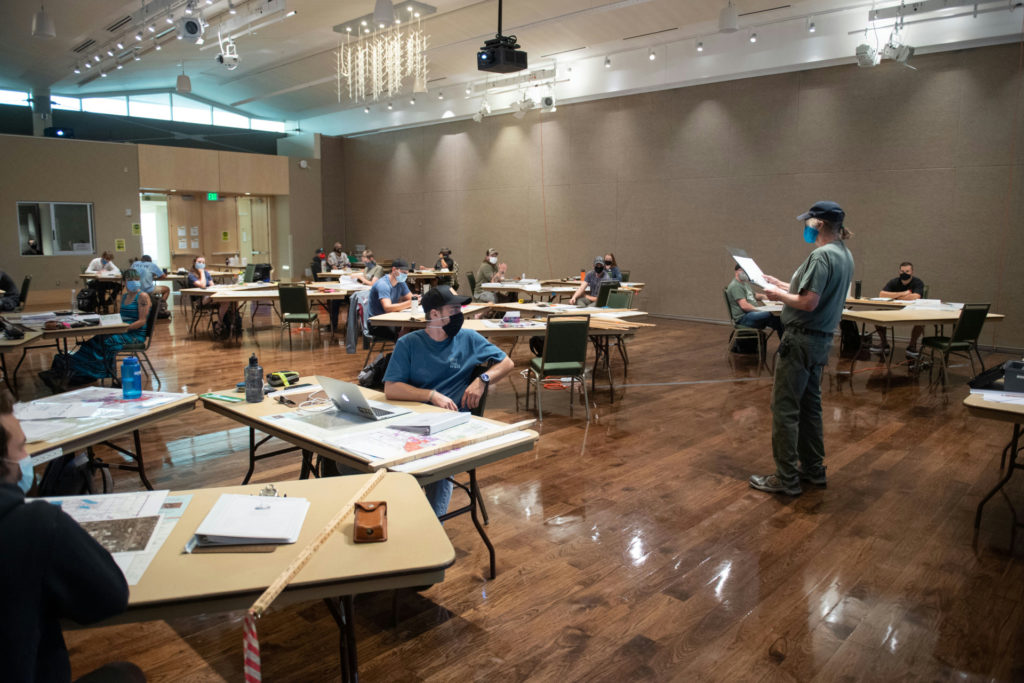
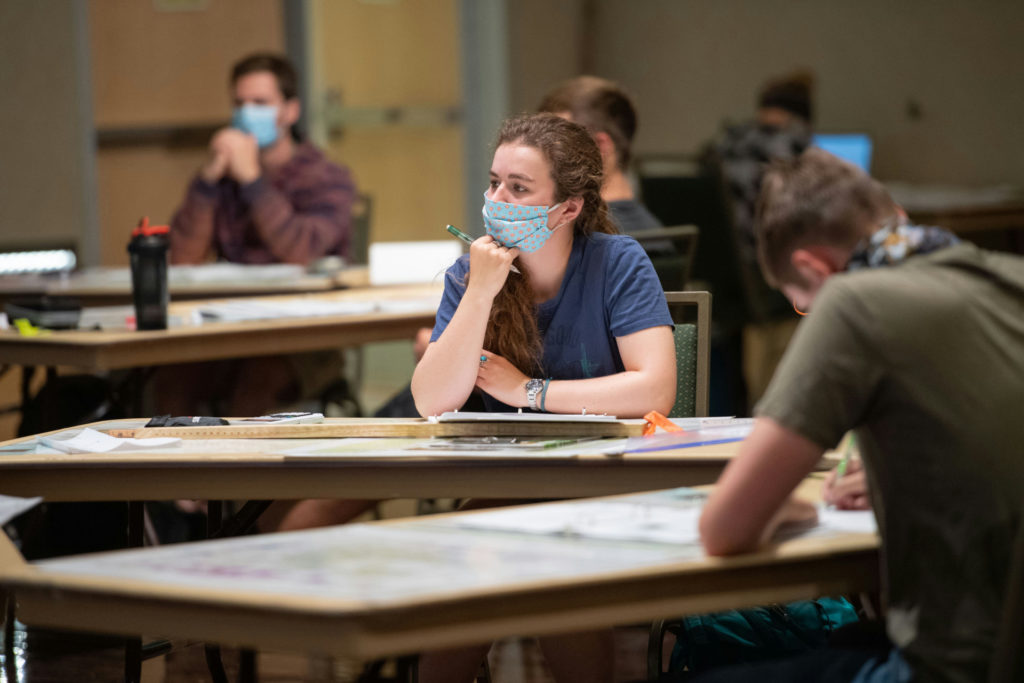
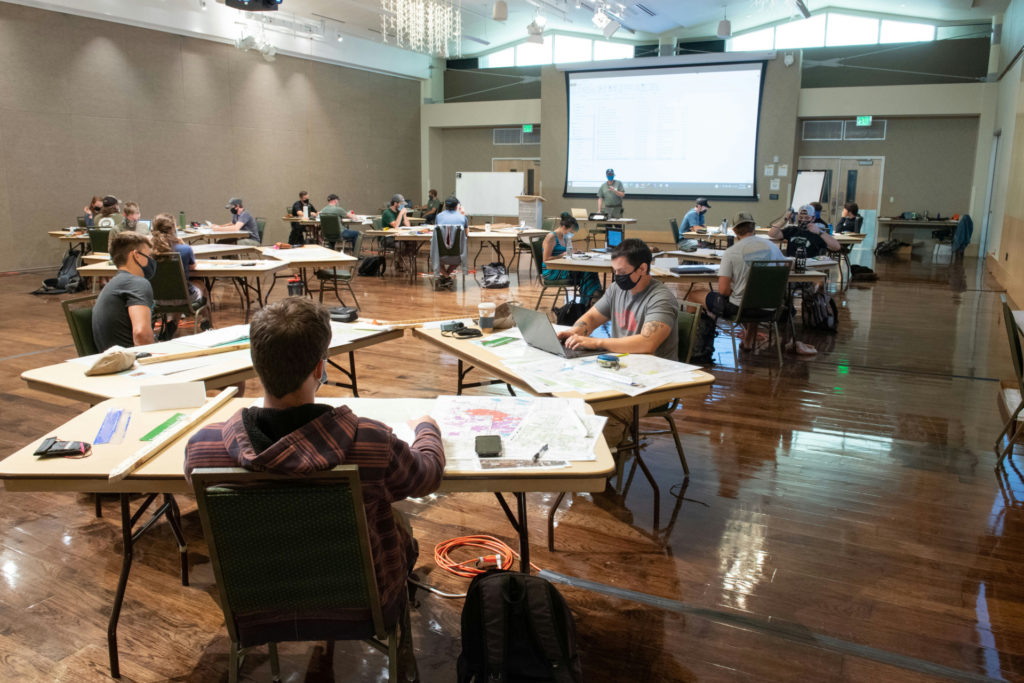
A move to remote
Eventually, in Anderson’s class, the four in-person students decided to join remotely instead. She believes that wasn’t because of the new need for dedicated entry/exit doors, face coverings, physically distanced desks, hand sanitizer or disinfecting wipes. It was about connection.
“I think it was a question of communication and relationships,” she said, explaining that one in-person student decided to go online because the other three members of her study group were remote. “It’s about feeling and being involved.”
The others may have migrated online to reveal more facial expressions (there’s no need for masks when remote), or to avoid coming to campus, according to Anderson.
“I want to acknowledge the students, because they need to have flexibility with what’s going on,” she said. “Being willing to learn from the students is a great thing. I’ve enjoyed having an opportunity to explore what this could look like.”
